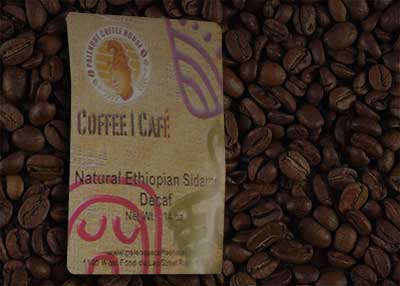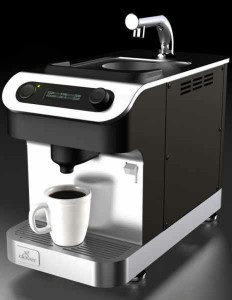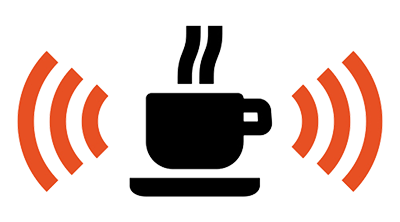Posted on Jun 4, 2012

For our purposes, “Asia and the Pacific” generally refer to India and Southeast Asia and then the Pacific islands, excluding Indonesia. Yes, the continent of Asia is the world’s largest – technically, Mocha coffee from Yemen could be considered an Asian coffee – but as far as coffee regions go, it’s best that we stick to south and southeast Asia. Large coffee producers like Vietnam are found in southeast Asia, and the influence of coffee splits out further east until you reach the United States: Hawaii in particular. The major producers of coffee in Asia are Vietnam, India, and Cambodia – Vietnam is renowned for its focus on Robusta coffee and produces about a third of the world’s largest producer of coffee, Brazil. It’s a distant second from Brazil, but it is still second place, which means that it is highly likely that even the most casual of coffee drinkers have drank coffee grown in this particular region of the world. Southeast Asian Robusta coffee production is of particular importance here, and it’s worth spending some time to further shed light on the subject. According to the Food and Agriculture Organization of the United Nations’ most recent data, Vietnam alone produces some 1.18 million of metric tons of green coffee, which is coffee in its natural, pre-roasted form. Approximately one-fifth of the world’s coffee produced is Robusta coffee, with most of that coming from the Robusta-friendly soils of Vietnam. In fact, it was fairly recent that Vietnam passed countries like India, Brazil, and Indonesia to become the world’s largest producer of Robusta coffee. Since many types of Robusta coffees are sold in American supermarkets – and, indeed, supermarkets around the globe – it is very likely that you have consumed coffee that originated in Asia and the Pacific before. For the most part, southeast Asia and India focus on Robusta coffee, with India producing coffees of both types. Sri Lanka, Cambodia, Thailand, and Vietnam all tend to focus on producing Robusta...
Read More »
Posted on May 31, 2012

Because Indonesia is so large and diverse, it can be difficult to classify and categorize all of its coffees; doing so would simply require that you invent a new category for each region and each coffee type! With that in mind, we’ll break off from our usual trend of categorizing the coffees by region and instead fill you in on some of the other single origin coffees of note available from Indonesia: Kopi Luwak: World renowned for the processing method – the beans are fed to an animal known as a civet and then retrieved from its feces – Kopi Luwak is not only one of the world’s most sought-after beans, but actually one of its most expensive. Many people believe that the enzymes of the civet work on the beans and take out much of its acidity. Additionally, Kopi Luwak will often only require a light roast for the flavors to fully come through. Bean description: If you can get past the idea of having your beans processed through a civet’s digestive track, you’re in for a real treat. Kopi Luwak’s subtle flavors come through as bright with little to no bitterness thanks to the civet treatment. Timor: Actually not technically an Arabica or a Robusta coffee, Timor is a hybrid between the two that was cultivated because of its resiliency to leaf rust – a problem that Arabica coffee growers often have to deal with. It comes from the island of Timor, so there is no confusion about the single origin nature of this coffee. Bean description: Hearty, strong, and certainly a hybrid of Arabica and Robusta, this is a good “transition” bean for anyone who’s been drinking Robusta their whole life. Bergendal: Technically a variety rather than a single origin coffee, Bergendal is a type of Arabica that is grown in Indonesia. Like Timor, it became known for its ability to fight off leaf rust, surviving an outbreak in the late 19th century that destroyed a lot of coffee crops and threatened Indonesia’s status on the world’s coffee stage. Another variety of Indonesian Arabica is...
Read More »
Posted on May 28, 2012

Though Papua, New Guinea is a large portion of Indonesia, it is not necessarily known for its unique coffee cultivation – many of the beans cultivated here are also available from other sources. The Arabica varieties grown in Papua have many of the hallmarks of traditional Indonesian blends (low to medium acidity, a body that is not too assertive, but a richness and earthiness that many people enjoy). Most New Guinea coffees are wet processed. Arusha: Actually truly known as “Papua New Guinea Arusha,” as there are other Arusha coffees available in the world, this cultivation on the world’s second largest island. It is not necessarily the most popular Arusha cultivation in the world, but it is worth mentioning here. Bean description: The bean contains the rich and full-bodied flavors characteristic of Arabica coffee, with its individual distinctions coming from its roots in the either French Mission or Typica varieties. Arona: Another coffee from Papua New Guinea, Arona’s smoothness makes it one of the more easy-to-drink coffees in the region. It does have the low/medium acidity of most Indonesian coffees, it might not be as earthy or aromatic as Sumatra or Sulawesi coffee but it is certainly an enjoyable drink. Bean description: Low to medium acidity, a toned-down body, but smooth and even an enjoyable fruitiness mark the Arona from Papua New Guinea. Sigri: Considered by many to be the trademark coffee of Papua New Guinea, the Sigri coffee available from this island is extremely well-balanced in acid and body and is capable of producing flavors that rival the fruitiness of beans from across the world – or at least, around Indonesia (such as Sulawesi coffee). It’s considered to be both a classic type of coffee and considering its exotic location, a favorite amongst those who want to try new coffees from around the world. Bean description: Fruity and mild in flavor and aroma, the Sigri is a very enjoyable cup of coffee that doesn’t have the assertiveness of other coffees in the region. For many people, this makes for a great morning cup without the earthiness of some of the other beans from the...
Read More »
Posted on May 24, 2012

At one point in history, the word “Java” was synonymous with coffee, the way the region of Mocha, Yemen once was. Today, Java’s place in the coffee world might be smaller, but there’s no doubt that its presence as a prime region of coffee growing is not a thing of the past. In fact, many of the world’s most popular blends include coffee from Java, including the ever-famous Mocha Java, which combines two of history’s greatest names in coffee. Java is also a unique name in the single-origin coffee world because it can be used both as a single-origin coffee in and of itself (Java, after all, is a region; coffee from a single region can easily be considered single-origin) as well as play host to a number of estates that produce Java Arabica coffees. For single-origin purists who enjoy single-estate coffees, Java is prime real estate indeed, including coffees from names such as: Djampit Blawan Pancoer Kayumas Bean description: Much of the coffee produced in Java carries a few common themes: it is wet processed, mostly cultivated on the east of the Ijen volcano system, and the beans offer produce a strong aftertaste that frequently reminds many coffee drinkers of...
Read More »
Posted on May 21, 2012

The long, oddly-shaped island of Sulawesi features a number of peninsulas that jut out into the sea – it’s no wonder that the island is also host to a number of coffee origins that can be listed here. The variety of coffee from Sulawesi is some of the best that you’ll find in Indonesia; in fact, with so many islands in Indonesia, it’s hard to believe that so many of the varieties can come from just one of the islands. However, because Sulawesi is a stand-alone island, many people will simply lump coffees from this island together when referring to a single origin. There’s no right or wrong answer as to how to categorize it, but we believe it’s worth exploring the individual cultivations of Sulawesi coffee. Tana Toraja: Also known as just Toraja or Sulawesi Toraja, this is a coffee grown in the high southeastern portions of Sulawesi. Considered to be more “earthy” than Java coffee, this is a generally assertive coffee that actually has very little acidity compared to its acidflavors. Bean description: Less body than many Sumatra coffees but more assertive in other ways, such as the richness of its earthy flavors and the boldness of its acid content, which is actually surprisingly low considering the flavor. Kalosi: Also spelled “Kalossi,” this specific area of Sulawesi coffee comes from south of the Toraja region. Kalosi is actually the capital of the Enkerang region, but the specialty coffee in the region is known as Kalosi because of the strength of the coffee that is produced there. Bean description: Much of the earthiness of the Tana Toraja bean is present here, but it’s not hard to see why so many specialty coffee drinkers enjoy Kalosi for its assertiveness in other areas. It has a distinct flavor and good body content that makes it a smooth, enjoyable...
Read More »
Posted on May 17, 2012

The large island of Indonesia lying in the Indian Ocean to the west of the rest of the archipelago, Sumatra is a major source of single origin coffees for those who enjoy coffee from the region. It could be argued that Sumatra’s close proximity to southeast Asia (Thailand, Vietnam, etc.) actually make it an Asian locality. However, Sumatra’s flavors and coffees carry a distinctive Indonesian flavor that is often hard to miss. Mandheling: Also commonly known as Sumatra Mandheling coffee, this coffee is named for the Mandailing people in the north of Sumatra. Typically Mandheling is a dry processed coffee, it is wet hulled (meaning that only the outer hull of the coffee is wet-washed for removal and the rest is dry processed), which makes the coffee variety that much more unique. Typically, this type of coffee is grown within about a half a mile to a mile above sea level and roasted to a medium to dark or dark roast in order to fully realize its flavors, which are considerable. Bean description: Rich and complex with flavors that hint of everything from chocolate to licorice, this is a great source of Indonesian coffee flavor. Typically a darker roast suits this coffee bean well, such as a French roast. Lintong: Also named for influence in northern Sumatra – though this time, it is not named for a people but for a district – Lintong is produced near Lake Toba. It’s important to note that Lintong does not refer to any one single origin other than various coffees around the Lake Toba region, which means there can be a high degree of variability in the type of Lintong coffee you acquire. Bean description: Considered a low-acid, medium-bodied coffee, Lintong has a classic “earthy” coffee aroma that many people enjoy. The beans can vary in processing methods since “Lintong” is a regional market name and not necessarily referring to any specific type of cultivation style. Highly regarded by coffee...
Read More »






